Apple’s bigwigs took to the stage at its Worldwide Developers Conference (WWDC) in June 2022 to unveil one of the largest overhauls of the MacBook Air in the device’s decade-plus history. Everything went under the knife, from the external design to the chip it runs on.
To help you get your head around all of the changes large and small, we’ve rounded everything up into this handy guide. We’ve even thrown in a few rumors of what could come next so you have something else to look forward to. So let’s dive in and see what’s new with Apple’s most popular laptop.
Price
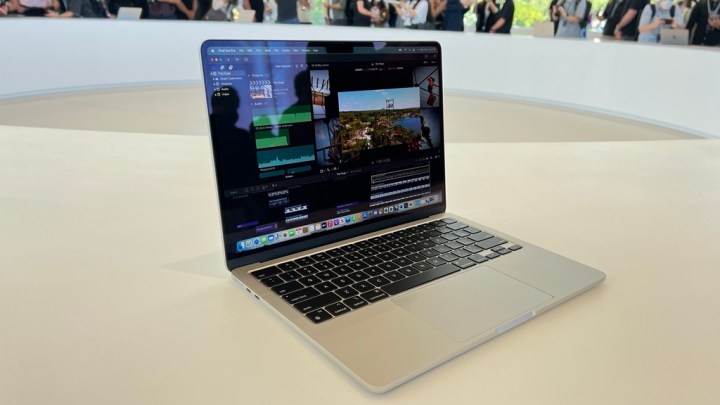
Before WWDC, there were expectations that the MacBook Air would get a price bump. After all, that’s what happened to the MacBook Pro when the 14-inch version launched. However, Apple decided to keep the $999 starting price for a while longer. There’s a catch, though, as that price tag is for the M1 model, which stays in the line-up.
If you want the newly redesigned M2 version, the price starts at $1,199.
A bold new design
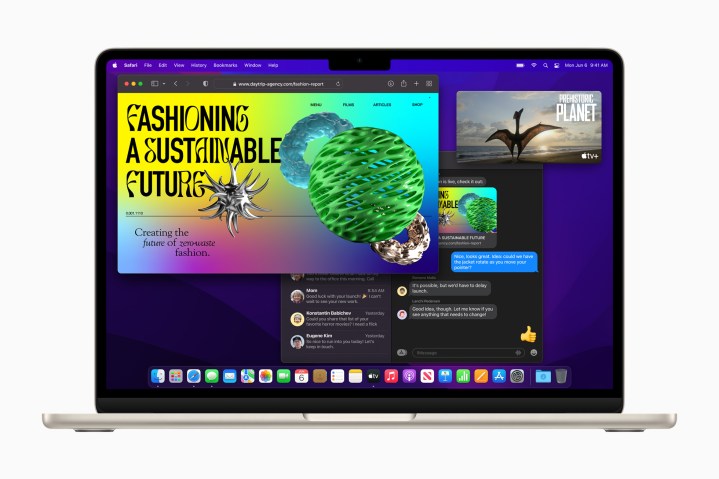
The first hints we got of a redesigned MacBook Air chassis came from leaker Jon Prosser in late 2021. Prosser claimed to have seen a photo of a light blue MacBook Air with a much flatter chassis — a design that did away with the famous tapered edge that the MacBook Air has used since its inception. Extrapolating from that photo, Prosser predicted the MacBook Air range would come in an array of bright colors, much like the 24-inch iMac.
In the end, Prosser was half right. The MacBook Air did indeed ditch the tapered edge, and blue is a color option in the refreshed line-up. However, we didn’t see any other bright colors, and Apple is instead offering the laptop in silver, Space Gray, and Starlight alongside the blue shade.
In its WWDC presentation, Apple claimed the new design is 20% less voluminous than the previous MacBook Air, which is pretty impressive considering the M1 MacBook Air was 0.16 inches at its thinnest point.
Despite the rumors, there’s no white keyboard, nor are there any white bezels. Instead, Apple decided to stick with the black trim the MacBook Air has traditionally used.
Prosser also made a number of claims about the keyboard and trackpad, namely that the new MacBook Air’s keyboard would feature full-sized function keys, as opposed to the squat versions on the current model. Prosser was right on that count, so you should find it a little easier to use those keys if you get the M2 MacBook Air. That change, however, would push the rest of the keyboard down, Prosser claimed, which in turn would mean the trackpad would be slightly smaller. In the end, the M2 MacBook Air’s chassis is 0.1 inches longer than the M1 version, and while Apple doesn’t give measurements for its trackpad, that extra size might mean it remains the same size as its M1 counterpart.
A notch and a 1080p webcam
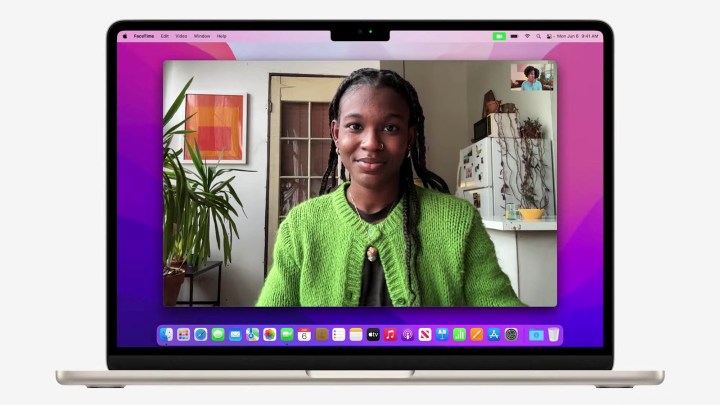
One interesting tidbit of Jon Prosser’s leaks was that the MacBook Air would adopt the same display notch as the MacBook Pro. This has been a contentious design decision ever since its inception on the Mac (and for longer still on the iPhone). In the end, though, Apple pushed ahead and brought the notch to the MacBook Air.
The company did this by thinning down the bezels around the sides of the display. Now, the screen edges are wafer thin, except around the webcam cut-out — producing what has become known as the notch.
Leaker Dylandkt agreed with Prosser and added that the laptop would get an upgraded 1080p webcam to replace its paltry 720p offering. In the end, that proved correct too. Apple explained that the webcam now comes with a larger sensor, “more efficient pixels,” and double the resolution and low-light performance of the M1 MacBook Air. Sadly, there’s no Center Stage, though.
No mini-LED display
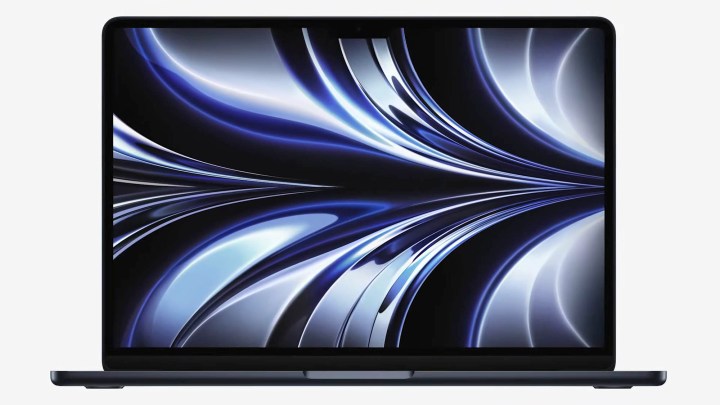
Before WWDC, there were rumors that Apple could bring mini-LED tech to the MacBook Air’s display. This was always an outlandish claim given that mini-LED technology is a high-end feature that makes much more sense in a professional device like the MacBook Pro, and in the end, it never made it into the M2 MacBook Air.
Yet that doesn’t mean the screen is completely without merit or upgrades. A more accurate rumor came from Display Supply Chain Consultants (DSCC) analyst Ross Young, who asserted that Apple might increase the MacBook Air display slightly from 13.3 inches to 13.6 inches. This time, the rumor was proven true, as Apple did indeed increase the display’s real estate thanks to the reduced bezels.
Elsewhere, the brightness was bumped up to 500 nits, an increase over the M1 model’s 400 nits, and it now supports one billion colors. However, as with the lack of a mini-LED panel, there’s also no 120Hz ProMotion technology either.
The next-gen M2 chip

If Apple was going to launch a MacBook Air at WWDC 2022, one thing was almost certain: It would come with a new M2 chip. Given the audience of developers who would need to know what they’ll be working with, it made a lot of sense. And in the end, we got what we expected, with the new MacBook Air getting an equally new M2 chip inside.
Built on a 5-nanometer process, the M2 features 20 billion transistors, which is 25% more than the M1. It also features a 100GBps memory controller, which is 50% more than the M1. There’s an eight-core CPU (with four performance cores and four efficiency cores), an eight-core GPU, and up to 24GB of unified memory.
OK, those are the specs, but how does the M2 actually perform? Apple loves an unlabeled Bezos chart, so it’s hard to know specific numbers, but the company did at least share some relative performance gains. The M2’s CPU offers 18% greater performance than the M1, for example. Apple said it performs 1.9 times faster than an unnamed 10-core PC chip, while it can deliver 87% of the power of another unknown 12-core chip while using a quarter of the power.
As for graphical grunt, the M2 is 25% stronger than the M1 while using the same amount of power. It’s 35% faster at its maximum power output and 2.3 times faster than the aforementioned 10-core PC chip while using a fifth of the power.
Alongside the CPU and GPU, the M2 has a next-generation Secure Enclave. The Neural Engine has been updated and can perform up to 15.8 trillion operations per second. Finally, there’s also a new media engine.
The return of MagSafe
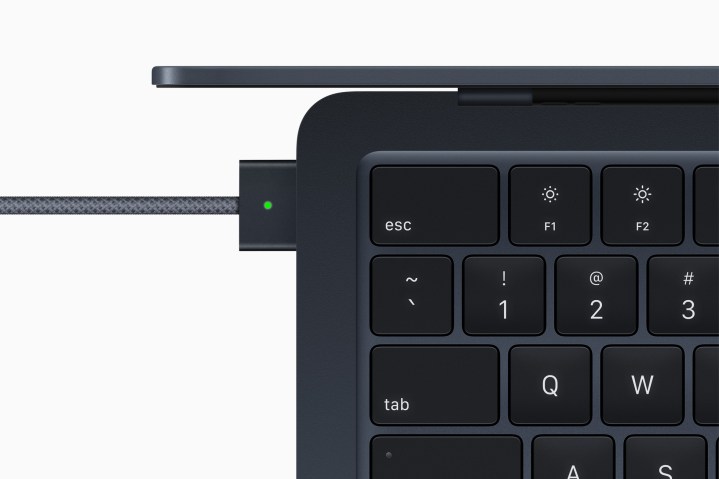
One of the most welcome changes in the new MacBook Air is the return of MagSafe. No, not Apple’s magnetic iPhone charging tech. The original MagSafe featured a charging cable that magnetically attached to your MacBook, meaning it would snap free if it was accidentally yanked, preventing your laptop from smashing onto the floor. It’s been absent from the MacBook Air since Apple discontinued the last MagSafe MacBook Air in 2019.
Before WWDC, both reporter Mark Gurman and leaker Jon Prosser said it would make a happy return, and both were vindicated on this front.
Aside from that, Gurman believed the MacBook Air would come with two USB4 ports. Prosser simply stated it would have two USB-C ports, although he didn’t outline whether they would be USB4. In the end, Apple confirmed the ports are USB4.
Meanwhile, Dylandkt claims that the MacBook Air will not have the HDMI and SD card slot that the MacBook Pro includes. This rumor, however, was wide of the mark.
What we want to see next
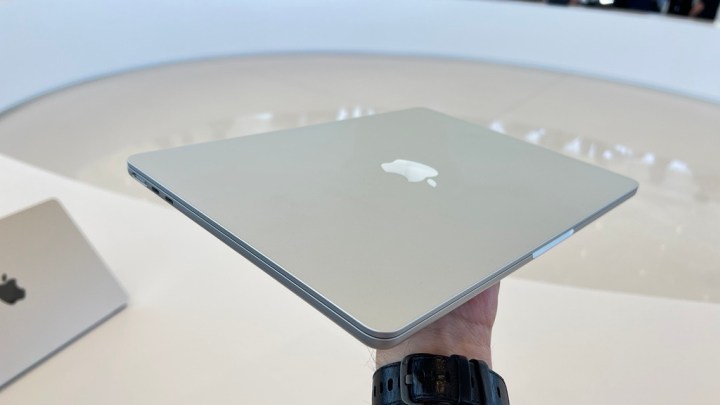
One feature we would love to see in the next MacBook Air is Face ID. We’ve been wanting it to make the jump from iPhones to Macs for ages now, and we know Apple is working on doing just that, but it seems we are going to have to wait a little longer. Back in January 2021, Mark Gurman said both Face ID and cellular connectivity would be absent from the next MacBook Air, as they simply aren’t ready yet. Much to our disappointment, Gurman was right here, and Face ID is nowhere to be seen in the latest MacBook Air.
The M2 MacBook Air also failed to fix a problem that beset the M1 version — namely, its inability to support more than one external monitor. That’s a real disadvantage if you’re a creative who wants the extra screen space or just someone who likes to spread their windows out a bit. It’s made worse by the fact that the latest MacBook Pro lets you connect up to four extra displays, suggesting the issue lies with Apple’s base-level chips (like the M1 and M2) and could not be fixed this time around. That’s something we really want to see improved in the future.
Editors’ Recommendations




